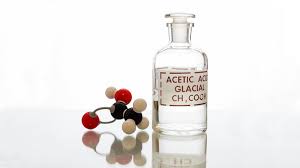The ‘Global Acetic Acid Market Report and Forecast 2023-2028’ by Expert Market Research gives an extensive outlook of the global acetic acid market size, assessing the market on the basis of its segments like applications, end use industries, and major regions.
The key highlights of the report include:
Market Overview (2018-2028)
- Historical Market Size (2022): Nearly USD 10.09 Billion
- Forecast CAGR (2023-2028): 5.4%
In the Asia Pacific region, the rising polymer manufacturing activities in countries like China and India are driving the acetic acid market demand. With rapid industrialisation and urbanisation in the region, the demand for acetic acid in diverse end-use sectors, including chemicals and paints and coatings, among others, is rising. In addition, the increasing population levels and the constantly surging demand for housing are bolstering investments in the construction sector, which is anticipated to aid the demand for acetic acid in the forecast period.
There is a growing utilisation of vinyl acetate monomer (VAM) as an intermediate in the manufacturing of paints and coatings formulations, sealants and glues, and textile finishes, among others. The rising use of VAM in various terpolymers and copolymers, including vinyl-acrylic resins and vinyl acetate-vinyl chloride copolymers, among others, is positively influencing the market for acetic acid.
As VAM is used in the manufacturing of polyvinyl acetate resins, its usage as a component in white glues for fabrics, wood, bonding paper, and plastics, among others, is increasing. Moreover, the economic benefits of VAM are driving its use in the paints and coatings, adhesives and sealants, and engineered fabrics sectors, which is likely to aid the acetic acid market in the forecast period.
Industry Definition and Major Segments
Acetic acid is a type of carboxylic acid that is used as an industrial chemical and reagent in the manufacturing of synthetic fabrics and fibres, plastic soft drink bottles, and photographic films, among others. It is used as an acidity regulator in food products, antimicrobial food preservatives, and protic solvents, among others.
Based on applications, the market is divided into:
- Vinyl Acetate Monomer (VAM)
- Purified Terephthalic Acid (PTA)
- Anhydride
- Ethyl Acetate
- Butyl Acetate
The market, on the basis of end use industry, can be segmented into:
- Plastics and Polymers
- Food and Beverages
- Inks, Paints and Coatings
- Chemicals
- Pharmaceuticals
- Others
The major regional markets of acetic acid include:
- North America
- Europe
- Asia Pacific
- Latin America
- Middle East and Africa
Market Trends
In the cosmetics and personal care sector, acetic acid is used in formulations for shampoos, hair conditioners, and other haircare products to control their pH levels. Besides, acetic acid is used as a descaling agent in the household sector and a significant ingredient to manufacture cellulose acetate in industrial applications.
The rising usage of acetic acid as an acidity regulator and condiments in the food and beverage sector is propelling the acetic acid market growth. In food products like pickled vegetables, vinegar, and sauce, among others, acetic acid is increasingly used as a souring agent, preservative, and organoleptic agent.
There is an increasing use of acetic acid in the manufacturing of vinyl acetate, cleaning agents, and as a solvent and raw material in the manufacturing of various chemicals. The acetic acid market growth can be further attributed to the growing usage of acetic acid in the manufacturing of pharmaceutical products, the robust growth of the oil and gas sector, and the rising usage of the acid to reduce metal corrosion.
Key Market Players
The major players in the acetic acid market report are British Petroleum, Celanese, and Jiangsu Sopo, among others. The report covers the market shares, capacities, plant turnarounds, expansions, investments, and mergers and acquisitions, among other latest developments of these market players.
The report studies the latest updates in the market, along with their impact across the market. It also analyses the market demand, together with its price and demand indicators. The report also tracks the market on the basis of SWOT and Porter’s Five Forces Models.
You may also like
-
How Does Plywood HSN Code Decide the GST Rate for Traders and Manufacturers?
-
POS Terminal Type: Which Is Best for Your Business?
-
How to Choose Fixed and Portable Gas Monitors for Industrial Gas Detection?
-
Simplifying Trademark Registration in Hong Kong: What Businesses Need to Know
-
EPR Registration and Annual Returns Explained: Compliance Made Simple for Businesses

